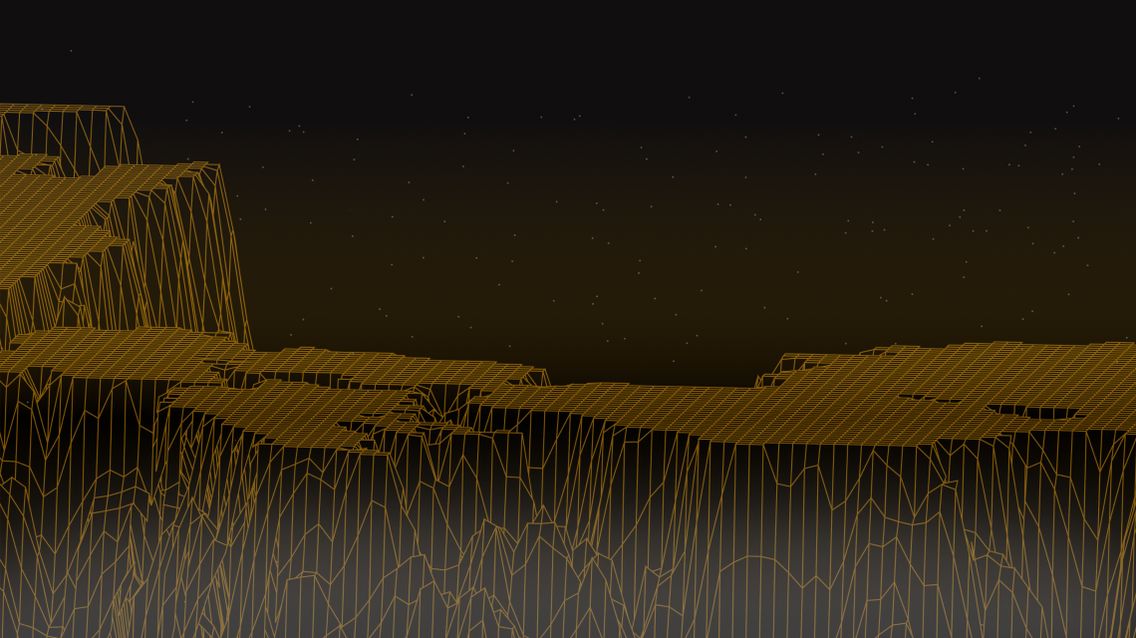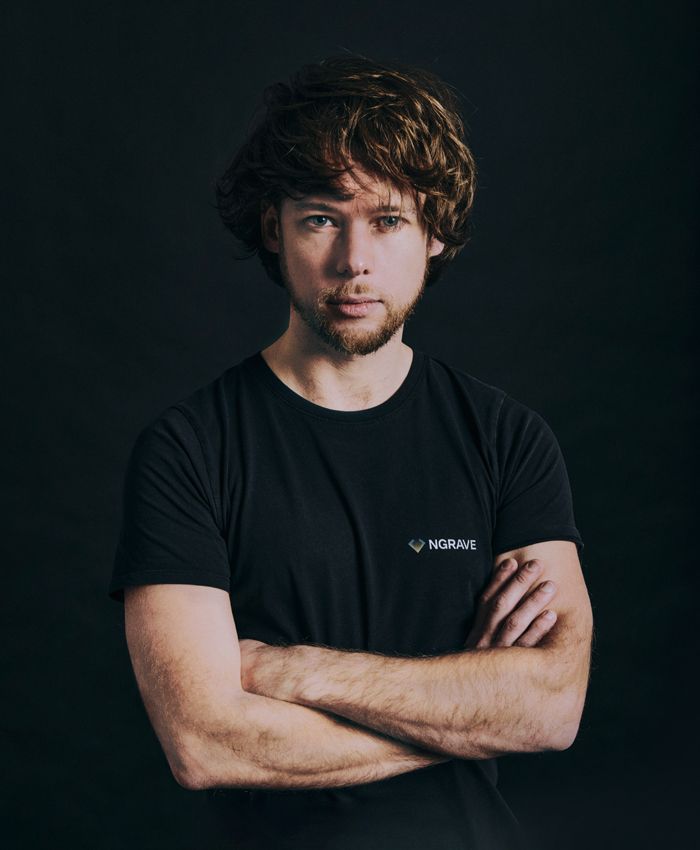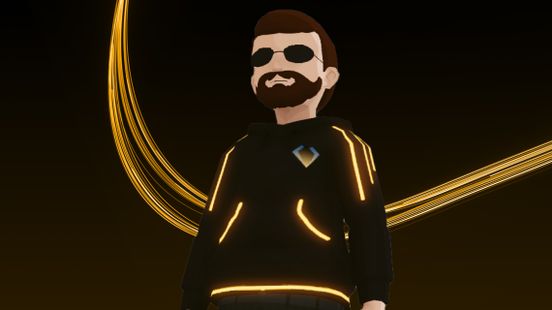

How To Own Land In The Metaverse
For those that grew up playing Minecraft, owning land in the Metaverse might seem natural. The reality is that this is a very new idea involving real-world investment and risks.
- Article Quick Links:
- What is the Metaverse?
- How can you own land in the Metaverse?
- What gives land value? Real-world vs Metaverse
- Regulation, Legitimacy & Security
- What can you do with land in the Metaverse?
- How NGRAVE leveraged the Metaverse building a shop
- Risks of owning land in the Metaverse
- Speculative Risk
- Regulatory Risk
- Security Risks
What is the Metaverse?
The term metaverse first appeared in a 1992 dystopian science fiction novel called ‘Snow Crash’ by Neal Stephenson, describing a computer-generated universe of virtual reality into which people escape from a world struggling from economic collapse
Thirty years on and the computer-generated virtual realities that Stephenson imagined are becoming the dominant form of recreation (some might argue the economic collapse isn’t far off either).
Roblox, Fortnite and Minecraft are all examples of the Metaverse. Emergent virtual environments where a digital expression of you, an Avatar, explores, battles and builds.
Crucially, everything that you build and own in platforms like Minecraft belongs to the publisher which is a characteristic of the dominant web-based economy - sometimes described as web2.0

Thanks to decentralised technologies the next iteration of the web reverses that relationship.
- You control your identity
- Transactions are facilitated by decentralised payment layers - blockchains & cryptocurrencies
- Value is portable & exchangeable relying on token standards e.g NFTs
- You can have a direct say in how the platform functions, relative to your stake in the platform, through structures called DAOs - Decentralised Autonomous Organisations
This means that you have full ownership and control of what you build in the web3.0 version of the Metaverse and can extract it and exchange it for value in the real world.
How can you own land in the Metaverse?
Ownership, identity and control in the Metaverse are exerted through a crypto wallet. They are software applications that share some similarities to traditional payment apps, allowing you to send and receive cryptocurrencies that function as money - such as Bitcoin and Ethereum - but also cryptographic tokens that represent unique digital assets in the Metaverse called NFTs - non-fungible tokens.
All the common elements of web2.0 games that are bonded to the platform, such as in-game items, your game character, and anything you create can be expressed as an NFT in the web3.0 metaverse.
The game logic functions as an open economy with its own currencies. The common set-up is to have two currencies, one providing utility within the game and denominating NFTs and one building value into the DAO community that owns the game (like shareholders) which gives holders the right to vote on the platform’s evolution.
So NFTs are records of ownership of the things you create or purchase in the Metaverse recorded on public blockchains like Ethereum, like a parcel of virtual land that can be traded for real-world value.
Your crypto wallet will allow you to transact these items within marketplaces, both within the Metaverse platform or on external exchanges such as OpenSea. This is the game-changer that allows you to own land in the Metaverse, build on it, create a business even and if you choose, sell it for real-world value.

The Metaverse property boom in numbers:
- BAYC Metaverse ‘Otherside’ launched April 30th, 2022 & has already achieved cumulative land sales of $776mill
- By May 2022 total cumulative land sales in the Metaverse topped $1.8bn
- The average land transaction in Otherside is $22,500 (at time of writing)
- As of April 2022 there were 5,892 individual landowners in Decentraland; 21,624 in The Sandbox
- In under 3 weeks Otherside attracted over 34,000 land owners
Source: Dune Analytics
What gives land value? Real-world vs Metaverse
OG rapper, Snoop Dogg, built a mansion in Decentraland, one of the most popular blockchain-based Metaverse games, then sold a parcel of land next door for $450,000.
But before you rush off to snap up a few virtual acres of land expecting to make your fortune it is important to understand the similarities and crucial differences between owning land in the Metaverse and IRL and how those differences relate to value.
- Supply, demand & scarcity
- Location
- Regulation, Protection & Security

Supply & Demand
One of the key influences on the value of land in the real world is the relationship between supply and demand. The supply of land is described as inelastic, which means that it doesn’t respond much to changes in demand, as a normal good or service might.
The reason should be pretty obvious. It is hard to make more land available for development. So if land is scarce but demand is high, all things being equal, the price of land will increase.
Overall demand for land will be a function of population growth and increased economic activity but this will vary greatly depending on location. The scarcity of land makes it an effective store of value, something people choose to invest in to preserve wealth into the future.
Supply & Demand in the Metaverse
If scarcity drives the value of physical land, virtual land can’t increase in value unless buyers can be convinced it is genuinely scarce, and not determined by the whims of the game developers.
Taking Decentraland as an example, its Metaverse is made up of 90,000 non-fungible land tokens each representing a 16mx16m plot of virtual space on which the owner can build whatever they want. Tokens are linked to a currency called MANA the supply of which decreases when land and in-games NFTs are purchased.
What creates digital scarcity is trust in the underlying blockchain that supports Decentraland rules - Ethereum - and the system for creating its rules and managing the supply of MANA; in short, Decentraland’s governance.
Governance comes from token holders discussing and voting on proposals on how Decentraland works in something called a DAO (Decentralised Autonomous Organisation). The DAO could vote to increase or decrease the supply of land, which would impact value, but the system is designed to align incentives, if that system breaks down it might crash the value of Metaverse land.
From the Decentraland Whitepaper:
With scarce land, developers can acquire users by purchasing land in high-traffic areas. This will allow secondary markets to develop around land ownership and rentals.
Location
One of the most famous mantras within the property business is that value is driven by three things. Location, location and location. This boils down to the physical attributes of the land and its immediate environment along with proximity to amenities, economic activity and transport.
Location within the Metaverse
The same rules of location exist within the Metaverse, the layout of which is generally divided into themed districts or realms, just as in any city, which will attract visitors based on affinity to or interest in the district theme, vibe and activities.
Decentraland’s Genesis Plaza (0,1) is where new users are ‘teleported’ so acts as a natural hub while the Wonder Mine Crafting Game (-27,57) attracts users as it enables them to collect gemstones and mine wearables for their Avatar, which gives status within the game.
Users can connect adjacent land parcels into Estates in order to attract more users, similar to dominating a section of the board in Monopoly. You can see the effect from stats shared by MetaMetric highlighting the value of land in The Sandbox (another popular Metaverse) based on the distance to popular landmarks.
Regulation, Legitimacy & Security
The importance of documenting the rights of property ownership can be traced back to the Law of the Twelve Tables (449BCE), the foundation of the Roman legal system. Land cannot have value without a system for establishing ownership, and rules that determine what can legally be built on it, along with a way to enforce both of those things.
Regulation, Legitimacy & Security within the Metaverse
In Decentraland each Land token includes a record of its (x.y) cartesian coordinates, its owner, and a reference to a file that describes and encodes the content the owner wishes to serve. The Metaverse equivalent of a planning application.
This information is committed to the underlying blockchain which secures it against alteration and counterfeiting.
What can you do with land in the Metaverse?
So you should now understand how you can own land in the Metaverse along with the drivers of value and the way blockchains provide legitimacy, but what can you actually do with land in the Metaverse?
As with land in the real world you can build on your land and create utility that generates an income or intrinsic value for you to enjoy. Unsurprisingly, the former is where all the current building activity in the Metaverse is focused and is limited only by game development and imagination.
Sticking with Decentraland as our example, you can build a Scene on a parcel of land, using a basic drag and drop browser-based builder tool or, for more complex projects, code a Scene using the Software Development Kit (SDK).
There is a repository of features that you build into your Scene following a specific syntax for creating basic building blocks (shapes and texture) and the ability to add specific functionality through Smart Items which include actions, triggers, sounds or conditional behaviours.
You can also integrate NFT art that you own into your scene, as you would hang pictures on your wall at home, or create a gallery in the Metaverse selling your own art or that of other creators.
This means that there are clubs in the Metaverse with DJs and door policies, functioning poker rooms and casinos, shops, NFT art galleries and even a Decantraland University.
How NGRAVE leveraged the Metaverse building a shop
NGRAVE participated in Fashion Week within Decentraland in March 2022 where physical items, such as NGRAVE’s ZERO, the coldest crypto hardware wallet, could be purchased as NFTs.

NGRAVE’s store in Decentraland was within the Boson Portal (coordinates -81,177) alongside a number of other major brands selling their products as NFTs. Our pop-up store includes the sale of limited edition fashion items - The Electric Ice Collection - to make your Avatar stand out in Decentraland. The collection featured a Neon Hoodie, terrifying Night Hunter Mask and Frosty Ice Wings with only 1,000 of each item available.
The ability to sell physical items as NFTs opens up a huge range of opportunities and is made possible through the Boson Protocol, which connects real-world commerce with Smart Contracts. Boson tokenises a commitment to exchange as an NFT which can be redeemed for the actual item.
Risks of owning land in the Metaverse
For the generation that has grown up playing Minecraft or Roblox, owning land in the Metaverse might seem perfectly natural. The reality is that this is a very new idea, which involves real-world investment and real-world risks.

Speculative Risk
The most obvious risk comes from the speculative nature of buying land in the Metaverse. You are betting on future adoption within the specific experience, and the wider ecosystem, as Bitcoin still exerts a dominant influence on prices.
The success of a specific Metaverse experience depends on fundamental analysis of the game mechanics, technical delivery and ability to scale; the project's tokenomics and trust in the overall governance.

Regulatory Risk
Given how immersive the Metaverse promises to be, the amount of data collected will dwarf what we generate through existing web 2.0 social profiles.
Every movement and interaction of our virtual 3D selves might be captured, analysed and potentially monetised, in ways we cannot yet fully understand. The use of VR Headsets has created an entirely new data set that will be valuable to platforms and advertisers; eye-tracking and Pupillometry, collectively known as Biometric Psychography.
This hasn’t gone unnoticed by regulators who will respond with legislation which may impact the success of Metaverse projects and the value of the real estate.
Security Risks
The explosion of interest in NFTs has brought a whole new cohort of users into the crypto space. That interest is often driven by FOMO which when combined with inexperience provides fertile ground for scammers and hackers.
Hot Wallets like MetaMask are how you interact with Metaverse, including buying/selling and storing land. Hackers will look at any and every angle to exploit poor Security and steal your recovery Seed and therefore your land.
Scammers will exploit inexperienced users within the Metaverse through Social Engineering impersonating support staff on Discord or Social Media designed to trick users into revealing their recovery Seed.
We’ve covered the risks of transacting in the Metaverse and the best ways to protect NFTs in separate articles that we’d encourage you to read, but one of the best ways to protect yourself in the Metaverse is to store your land and any other NFTs on a secure hardware wallet like the NGRAVE ZERO.
Land and property have generally proved to be a shrewd investment, especially as in recent years the value of fiat money is eroded by inflation. So as we experience more of our lives in virtual environments a different kind of property boom is coming, where some of the fundamental rules of what gives land value still apply while others derive from the specifics of crypto-economics. Make sure you understand both before staking your claim.
Article Quick Links:
- What is the Metaverse?
- How can you own land in the Metaverse?
- What gives land value? Real-world vs Metaverse
- Regulation, Legitimacy & Security
- What can you do with land in the Metaverse?
- How NGRAVE leveraged the Metaverse building a shop
- Risks of owning land in the Metaverse
- Speculative Risk
- Regulatory Risk
- Security Risks

Ruben is a repeat tech entrepreneur. His focus is on digital asset security and financial empowerment. He is co-founder and CEO of NGRAVE, the creator of “ZERO” - the world’s most secure hardware wallet for crypto storage. In 2021, he was selected for Belgium’s 40 under 40. Before that, he was a finalist in scale-ups.eu’s Disruptive Innovator of the Year 2020 Award, and nominated in Google/PWC/Trends’ Digital Pioneer 2020.

